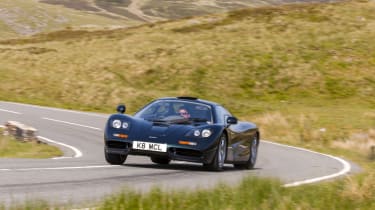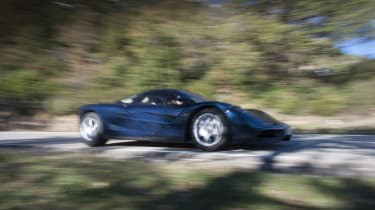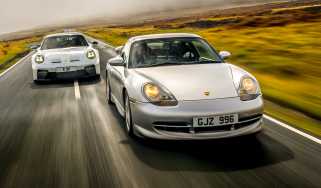The original McLaren F1 press release in full - Every detail of the incredible V12 supercar - McLaren F1 braking systems
As McLaren re-publishes the full, original 1992 press release for its F1 supercar, it's a perfect time to celebrate the F1, we think
IMPECCABLE BRAKING IS A PRIMARY FORMULA 1 REQUIREMENT IN EQUAL DEMAND ON THE ROAD. BRAKING PERFORMANCE IS THUS A MAJOR PRIORITY
In development of the F1, McLaren Cars have worked closely with Brembo of Italy to develop exceptionally high-performance brakes using – for the very first time on a production car – Formula 1-type ‘monobloc’ aluminium four-piston callipers, clasping the latest road-usable ventilated discs. Fully divided front and rear hydraulic circuits are actuated by the Formula 1-style floor-pivoted pedal, while the F1’s lightweight aluminium handbrake calliper has also been specially developed by Brembo.
Slowing such a car safely and efficiently from near maximum speeds demands considerable brake cooling. Normally, such a high-speed cooling requirement becomes embarrassing at low and medium speeds, reducing disc, calliper and pad base temperature excessively between applications. Consequently, the McLaren F1 now introduces ‘intelligent’ brake cooling.
With speed and brake application sensors feeding an electronic control unit, brake-cooling air intake ducts open automatically only when the driver makes a sufficiently-demanding application. Since closed brake ducts create no drag, they improve the F1’s aerodynamic efficiency. Furthermore, the system enhances braking ‘feel’ for the driver by sustaining comfortable pad and disc base temperatures during enthusiastic motoring.
In contrast, two conventional areas of modern road car development which actually degrade driver feel and feedback are power brake assistance and anti-lock braking systems – ABS.
By developing the F1’s brakes along Formula 1 lines, and particularly by achieving the project’s exceptionally low target weight, power assistance is unnecessary. With the automatic aerodynamic Brake and Balance ‘Foil feature – see page 20 – braking effect and driver feel are improved, since its downforce enhancement then assists the driver under heavy braking by increasing the load on each wheel.
Further evidence of how – in the McLaren F1 – Grand Prix racing really does ‘Improve the Breed’.




